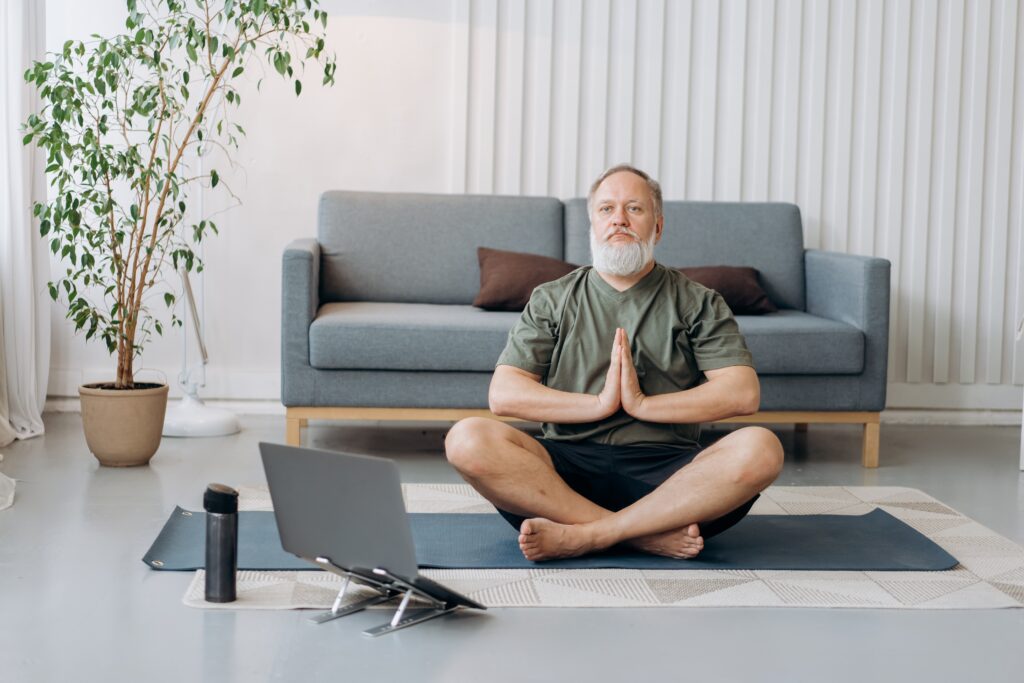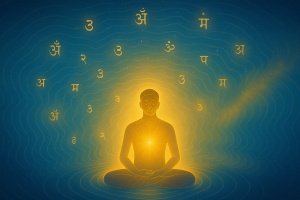Whatever our conception of the objective world, we all have a subjective experience that is based on the consciousness of existence that we experience every day as we wake up in the morning when we recover the memory we have of ourselves, and open our eyes to a new day of that objective world.
We perceive ourselves as a subject, as a person, as something that has an I and a will, that can be wrong, that has to interact with others, etc., we live it for one day, and at the end of the day, that identity dies and disappears into the void of deep sleep to reappear the next day.
That subjective world we live in, we live in total solitude. No one knows what we tell ourselves about ourselves, no one knows our memories. We think that the memory is something common, however the yesterday of which writes these lines and your yesterday do not resemble in anything, nor will they ever be known. The same goes for even your nearest and dearest. We are born alone and die alone and in fact we make this journey from the subjective experience of existence, alone too. In other words, we live subjectively, not objectively.
The characteristics of this subjective “I” are:
• we live as free to decide, as someone who makes decisions, which can be right or wrong
• we live like a creative “I.” We are able to create new things, a poem, a painting never painted before, a new idea etc…
• we live as if we were going to last forever, we don’t live as one thing that is changing. It gives us the feeling of being the same “I” every morning when we get up, we live that subjective “I” as something that doesn’t change.
• Finally, when we experience suffering, it is that “I” who perceives and lives the experience of suffering. This suffering can be virtual, that is, the person can be fed, and have an adequate place to sleep and rest and have everything objectively needed to live and yet that person can be simultaneously subjected to the experience of deep suffering.
The meditation and spiritual practices course will provide the beneficiaries with tools that allow us to face the day to day with greater serenity. It is a training of the mind, a discipline that, well developed, gives us greater awareness and frees us from the thoughts that produce suffering and feelings of inadequacy for life.
Most of the time, our mind is a continuous coming and going of absolutely uncontrolled and, most of the time, not too constructive thoughts.
Buddhists claim that the mind is like a drunken monkey who has been stung by a scorpion, always jumping from one branch to another and screaming absolutely mad. Like the drunk monkey, the mind moves from one thought to another, from one thought to another, in endless frantic verbiage.
What can be done then? How can you control this wild animal that is the mind? Buddhists, contemplative traditions and all ancient spiritual traditions know the answer to this question: meditation techniques. Meditation trains the mind to go where we want it to go.
In the West, in recent years, scientists and health professionals have researched its beneficial effects, which we could classify as:
• Physical aspects
Different studies have found not only differences in brain functioning in both expert meditators and beginners [1,3,4,11,12,16,17,19,20,22,23] but also beneficial effects in:
– cardiovascular system [7,10,13]
– immune system [3]
– chronic pain relief, psoriasis, fibromyalgia, treatments for cancer [2,6,14,18]
• Psychological aspects
In this field, studies have proven the effectiveness of meditation in:
– stress and anxiety reduction [2,6,9,10,14,21]
– prevention of depression [8,18]
– improved concentration [4,19,21]
– combating eating disorders [5]
– emotional balance [4,15,21]
– drug dependence and alcohol consumption [15]
In spite of the benefits that meditation brings, it should not be forgotten that meditation was born and developed as a spiritual practice and that its main objective is to help us unfold all our inner potential.
Register in our free meditation course before the only 10 sponsored places of each course get taken.
References
[1] “A Cartography of the Ecstatic and Meditative States”. Roland Fisher, Science 1971, 174, pp 4012-4026.
[2] “A Randomized, Wait-List Controlled Clinical Trial: The Effect of a Mindfulness Meditation-Based Stress Reduction Program on Mood and Symptoms of Stress in Cancer Outpatients”. Michael Speca et al, Psychosomatic Medicine 2000, 62, pp 613-622.
[3] “Alterations in Brains and Immune Function Produced by Mindfulness Meditation”. Richard J. Davidson et al, Psychosomatic Medicine 2003, 65, pp 564-570.
[4] “Attention regulation and monitoring in meditation”. Antoine Lutz et al, Trends in Cognitive Sciences 2008, April 12(4), pp 163-169.
[5] “An Exploratory Study of a Meditation-Based Intervention for Binge Eating Disorder”. Jean L. Kristeller et al, Journal of Health Psychology 1999, 4(3), pp 357-363.
[6] “An Outpatient Program in Behavioral Medicine for Chronic Pain Patients Based on the Practice of Mindfulness Meditation”. Jon Kabat-Zinn, General Hospital Psychiatry 1982, 4, pp 33-47.
[7] “Decreased blood pressure in borderline hypertensive subjects who practiced meditation”. Herbert Benson et al, Journal of Chronic Diseases 1974, 27, pp 163-169.
[8] “Doctors urge NHS to use meditation to beat the blues”. Andrew Mc-Culloch, published at DailyMail online, January 2010.
[9] “Effectiveness of a Meditation-Based Stress Reduction Program in the Treatment of Anxiety Disorders”. Jon Kabat-Zinn et al, American Journal of Psychiatry 1992, 149, pp 936-943.
[10] “Effects of a Randomized Controlled Trial of Transcendental Meditation on Components of the Metabolic Syndrome in Subjects With Coronary Heart Disease”, Maura Paul-Labrador et al, Archives of Internal Medicine 2006, 166, pp 1218-1224.
[11] “Functional brain mapping of the relaxation response and meditation”. Sara W. Lazar et al, NeuroReport 2000, May 15, 11(7), pp 1581-1585.
[12] “Human anterior and frontal midline theta and lower alpha reflect emotionally positive state and internalized attention: high-resolution EEG investigation of meditation”. L.I. Aftanasiev et al, Neuroscience Letters 2001, 310, pp 57-60.
[13] “Impact of Meditation on Resting and Ambulatory Blood Pressure and Heart Rate in Youth”. Vernon A. Barnes et al, Psychosomatic Medicine 2004, 66, pp 909-914.
[14] “Influence of Mindfulness Meditation Based-Stress Reduction Intervention on Rates of Skin Clearing in Patients With Moderate to Severe Psoriasis Undergoing Phototherapy (UVB) and Photochemotherapy (PUVA)”, Jon Kabat-Zinn et al, Psychosomatic Medicine 1998, 60, pp 625-632.
[15] “Medical Care Utilization and the Transcendental Meditation Program”. David Orme-Johnson, Psychosomatic Medicine 1987, 49, pp 493-507.
[16] “Meditation experience is associated with increased cortical thickness”. Sara W. Lazar et al, NeuroReport 2005, November 28, 16(17), pp 1893-1897.
[17] “Meditation States and Traits: EEG, ERP, and Neuroimaging Studies”. B. Rael Cahn et al, Psychological Bulletin 2006, 132(2), pp 180-211.
[18] “Mindfulness meditation alleviates depressive symptoms in women with fibromyalgia: Results of a randomized clinical trial”. Sandra E. Sephton et al, Arthritis Care and Research 2007, February 15, 1, pp. 77-85.
[19] “Neural correlates of attentional expertise in long-term meditation practitioners”, J.A. Brefczynski-Lewis et al, Proceedings of the National Academy of Sciences of the USA 2007, 104(27), pp. 11483-11488.
[20] “Regulation of the Neural Circuitry of Emotion by Compasion Meditation: Effects of Meditative Expertise”. Antoine Lutz et al, PlosONEhttp://www.plosone.org/article/info:doi/10.1371/journal.pone.0001897
[21] “Short-term meditation training improves attention and self-regulation”. Yi-Yuan Tang et al, Proceedings of the National Academy of Sciences of the USA 2007, 104(43), pp. 17152-17156.
[22] “Spectral analysis of the EEG in meditation”. J.P. Banquet, Electroencephalography and Clinical Neurophysiology 1973, 35, pp 143-151.
[23] “The neural basis of the complex mental task of meditation: neurotransmitter and neurochemical considerations”. A.B. Newberg et al, Medical Hypotheses 2003, 61(2), pp 282-291.
[/et_pb_text][et_pb_text _builder_version=”3.19.9″]
Whatever our conception of the objective world is, we all have a subjective experience that is based on the consciousness of existence that we experience every day as we wake up in the morning. As we awaken, we recover the memory we have of ourselves, and open our eyes to a new day of that objective world.
We perceive ourselves as a subject, as a person, as something that has an I and a will, that can be wrong, that has to interact with others, etc. We live it for one day, and at the end of the day, that identity dies and disappears into the void of deep sleep to reappear the next day.
That subjective world we live in, we live in total solitude. No one knows what we tell ourselves about ourselves, no one knows our memories. We may think that the memory is something commonly shared, but the “I” which wrote these lines yesterday, bears no resemblance to the “I” of today. The same goes for even your nearest and dearest—they are all projections of memories residing in our subconscious mind. We are born alone and die alone; and in fact we make this journey from the subjective experience of existence, alone too. In other words, we live subjectively, not objectively.
The characteristics of this subjective “I” are:
• we live as free to decide, as someone who makes decisions, which can be right or wrong
• we live like a creative “I.” We are able to create new things, a poem, a painting never painted before, a new idea etc…
• we live as if we were going to last forever, we don’t live as one thing that is changing. It gives us the feeling of being the same “I” every morning when we get up, we live that subjective “I” as something that doesn’t change.
• Finally, when we experience suffering, it is that “I” who perceives and lives the experience of suffering. This suffering can be virtual, that is, the person can be fed, and have an adequate place to sleep and rest and have everything objectively needed to live and yet that person can be simultaneously subjected to the experience of deep suffering.
The meditation and spiritual practices course will provide the beneficiaries with tools that allow us to face the day to day with greater serenity. It is a training of the mind, a discipline that, well developed, gives us greater awareness and frees us from the thoughts that produce suffering and feelings of inadequacy for life.
Most of the time, our mind is a continuous coming and going of absolutely uncontrolled and, most of the time, not too constructive thoughts.
Buddhists claim that the mind is like a drunken monkey who has been stung by a scorpion, always jumping from one branch to another and screaming absolutely mad. Like the drunk monkey, the mind moves from one thought to another, from one thought to another, in endless frantic verbiage.
What can be done then? How can you control this wild animal that is the mind? Buddhists, contemplative traditions and all ancient spiritual traditions know the answer to this question: meditation techniques. Meditation trains the mind to go where we want it to go.
In the West, in recent years, scientists and health professionals have researched its beneficial effects, which we could classify as:
* Physical aspects
Different studies have found not only differences in brain functioning in both expert meditators and beginners [1,3,4,11,12,16,17,19,20,22,23] but also beneficial effects in:
– cardiovascular system [7,10,13]
– immune system [3]
– chronic pain relief, psoriasis, fibromyalgia, treatments for cancer [2,6,14,18]
* Psychological aspects
In this field, studies have proven the effectiveness of meditation in:
– stress and anxiety reduction [2,6,9,10,14,21]
– prevention of depression [8,18]
– improved concentration [4,19,21]
– combating eating disorders [5]
– emotional balance [4,15,21]
– drug dependence and alcohol consumption [15]
In spite of the benefits that meditation brings, it should not be forgotten that meditation was born and developed as a spiritual practice and that its main objective is to help us unfold all our inner potential.
Register in our free meditation course before the only 10 sponsored places of each course get taken.
References
[1] “A Cartography of the Ecstatic and Meditative States”. Roland Fisher, Science 1971, 174, pp 4012-4026.
[2] “A Randomized, Wait-List Controlled Clinical Trial: The Effect of a Mindfulness Meditation-Based Stress Reduction Program on Mood and Symptoms of Stress in Cancer Outpatients”. Michael Speca et al, Psychosomatic Medicine 2000, 62, pp 613-622.
[3] “Alterations in Brains and Immune Function Produced by Mindfulness Meditation”. Richard J. Davidson et al, Psychosomatic Medicine 2003, 65, pp 564-570.
[4] “Attention regulation and monitoring in meditation”. Antoine Lutz et al, Trends in Cognitive Sciences 2008, April 12(4), pp 163-169.
[5] “An Exploratory Study of a Meditation-Based Intervention for Binge Eating Disorder”. Jean L. Kristeller et al, Journal of Health Psychology 1999, 4(3), pp 357-363.
[6] “An Outpatient Program in Behavioral Medicine for Chronic Pain Patients Based on the Practice of Mindfulness Meditation”. Jon Kabat-Zinn, General Hospital Psychiatry 1982, 4, pp 33-47.
[7] “Decreased blood pressure in borderline hypertensive subjects who practiced meditation”. Herbert Benson et al, Journal of Chronic Diseases 1974, 27, pp 163-169.
[8] “Doctors urge NHS to use meditation to beat the blues”. Andrew Mc-Culloch, published at DailyMail online, January 2010.
[9] “Effectiveness of a Meditation-Based Stress Reduction Program in the Treatment of Anxiety Disorders”. Jon Kabat-Zinn et al, American Journal of Psychiatry 1992, 149, pp 936-943.
[10] “Effects of a Randomized Controlled Trial of Transcendental Meditation on Components of the Metabolic Syndrome in Subjects With Coronary Heart Disease”, Maura Paul-Labrador et al, Archives of Internal Medicine 2006, 166, pp 1218-1224.
[11] “Functional brain mapping of the relaxation response and meditation”. Sara W. Lazar et al, NeuroReport 2000, May 15, 11(7), pp 1581-1585.
[12] “Human anterior and frontal midline theta and lower alpha reflect emotionally positive state and internalized attention: high-resolution EEG investigation of meditation”. L.I. Aftanasiev et al, Neuroscience Letters 2001, 310, pp 57-60.
[13] “Impact of Meditation on Resting and Ambulatory Blood Pressure and Heart Rate in Youth”. Vernon A. Barnes et al, Psychosomatic Medicine 2004, 66, pp 909-914.
[14] “Influence of Mindfulness Meditation Based-Stress Reduction Intervention on Rates of Skin Clearing in Patients With Moderate to Severe Psoriasis Undergoing Phototherapy (UVB) and Photochemotherapy (PUVA)”, Jon Kabat-Zinn et al, Psychosomatic Medicine 1998, 60, pp 625-632.
[15] “Medical Care Utilization and the Transcendental Meditation Program”. David Orme-Johnson, Psychosomatic Medicine 1987, 49, pp 493-507.
[16] “Meditation experience is associated with increased cortical thickness”. Sara W. Lazar et al, NeuroReport 2005, November 28, 16(17), pp 1893-1897.
[17] “Meditation States and Traits: EEG, ERP, and Neuroimaging Studies”. B. Rael Cahn et al, Psychological Bulletin 2006, 132(2), pp 180-211.
[18] “Mindfulness meditation alleviates depressive symptoms in women with fibromyalgia: Results of a randomized clinical trial”. Sandra E. Sephton et al, Arthritis Care and Research 2007, February 15, 1, pp. 77-85.
[19] “Neural correlates of attentional expertise in long-term meditation practitioners”, J.A. Brefczynski-Lewis et al, Proceedings of the National Academy of Sciences of the USA 2007, 104(27), pp. 11483-11488.
[20] “Regulation of the Neural Circuitry of Emotion by Compasion Meditation: Effects of Meditative Expertise”. Antoine Lutz et al, PlosONE http://www.plosone.org/article/info:doi/10.1371/journal.pone.0001897
[21] “Short-term meditation training improves attention and self-regulation”. Yi-Yuan Tang et al, Proceedings of the National Academy of Sciences of the USA 2007, 104(43), pp. 17152-17156.
[22] “Spectral analysis of the EEG in meditation”. J.P. Banquet, Electroencephalography and Clinical Neurophysiology 1973, 35, pp 143-151.
[23] “The neural basis of the complex mental task of meditation: neurotransmitter and neurochemical considerations”. A.B. Newberg et al, Medical Hypotheses 2003, 61(2), pp 282-291.






